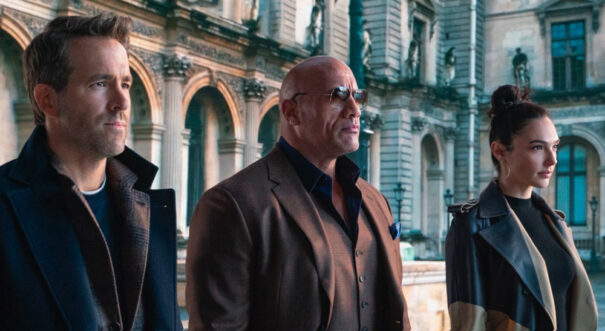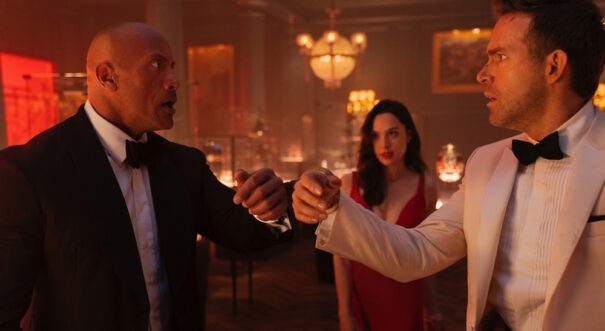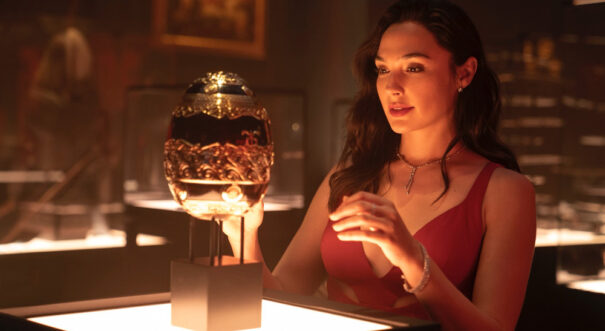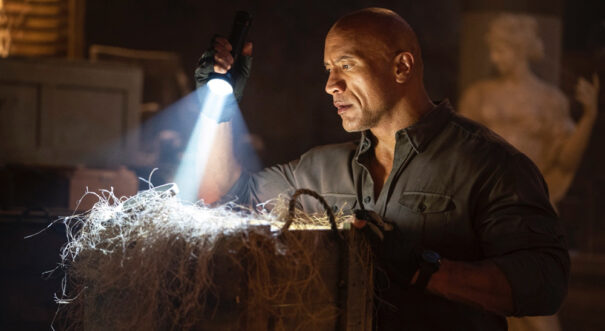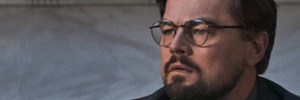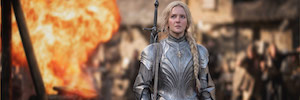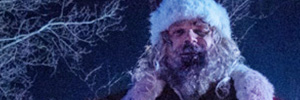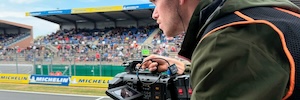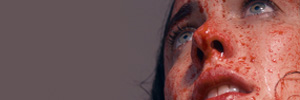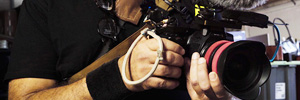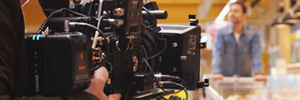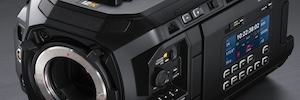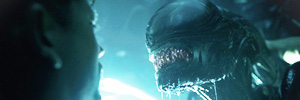‘Red Notice’ (Netflix), graded with DaVinci Resolve Studio
DaVinci Resolve Studio from Blackmagic Design was the colour grading software of choice for Red Notice, one of Netflix’s latest productions.
Red Notice, an international crime adventure, follows FBI agent John Hartley (Dwayne Johnson) as he pursues art thief Nolan Booth (Ryan Reynolds). Hartley is forced to team up with Booth in order to capture “The Bishop”, an elusive art thief intent on stealing a priceless artifact known as Cleopatra’s Eggs. The film, shot by Markus Förderer, ASC, takes us on a journey through locations as diverse as Rome, Valencia and the jungles of Argentina.
The film was shot at a time when it was not possible to travel by plane, let alone carry out a film production of this size. As Förderer recalls: “We had to rethink how to shoot our globetrotting movie. Without the ability to travel internationally, we ended up building the majority of our sets on very large stages and on a back lot in Atlanta. These scenes were always intercut with wide establishing shots we were able to capture with a reduced crew on the actual locations around the world.”
On this basis, the challenge was clear: to bring together the different elements that would make up this production. To meet these challenges, the post-production phase played a major role. Förderer relied on colourist Walter Volpatto (Company 3), with whom he worked from the pre-production stage: “Walter has a great eye to bring all those pieces together and also match VFX shots with our live action photography. This is always a tricky process and, in my experience, a crucial step. No matter how good the VFX shots are, there is always something we can do in the grade to make them appear as if they were captured through an actual lens. We emulate certain lens characteristics like flaring and edge contrast.”
Creating the colour for Red Notice
During the pre-production phase, Förderer and director Rawson Marshall Thurber established a colour palette of red, gold and warm hues to complement the locations mentioned in the script. Volpatto defines the aesthetics of the film by reference to two scenes: “A lot of the action takes place inside the ‘Red Room’. The room itself and Gal Gadot’s red dress had to read a very pure red. We had the opposite look in a Russian jail, where it’s literally a cold place and would have a cooler color palette. So, there are these two major colors popping up throughout the movie.”
Early camera tests helped Volpatto and Förderer create a single LUT table in DaVinci Resolve Studio, which allowed them to modify the different tones while still rendering the skin tones in a natural and subtle way: “We both like to prepare a look ahead of time in Resolve so that Markus can work on set almost as if he was shooting a customized film stock, setting the lighting with the characteristics of that single LUT in mind instead of carrying multiple LUTs. He only has to think about his light meter and the lights, and he doesn’t even have to look at the monitor.”
It’s closer to the work method cinematographers used to use, where they would get to know everything about a particular stock, and then they would know exactly how to get the look they want for that stock. For the final grade, we sit together and shape the scenes and adjust the details. But the overall attributes of the image are set in advance so we’re not reinventing the wheel in the final grade,” Volpatto explains.
Additional VFX
Despite the extensive planning that went into Red Notice, the style of filming imposed by the pandemic brought challenges at every stage: “Some scenes were shot on location, but then after the pandemic hit, elements were shot in Atlanta, and then some more sections were added with some pickups,” recalls Volpatto. As a result, it was necessary to include more visual effects than initially anticipated: “Sometimes they’d have to shoot without extras and then shoot the extras and composite them and the backgrounds in as effects.”
Although visual effects require a lot of compositing techniques, Volpatto had no problem blending elements together, creating “seamless overlays” of the different types of shots. “We may have shots that were shot beautifully but would still need work to blend together with the surrounding material. A lot was done in VFX and sent to us as we did the color, but we used some tools to just refine looks when different parts of the same scene had been shot many months apart.”
P3 and HDR in DaVinci Resolve
Thanks to DaVinci Resolve Studio, Volpatto was able to create a project in P3 format and, at the same time, quickly review the content in HDR: “The Color Space Transform in Resolve allowed me to look at the P3 and the HDR of the same image with literally a couple of clicks. So, I could do a color correction for a scene then review it immediately in HDR and do whatever necessary trims I needed to do.”
In addition, by using the collaboration tools, Volpatto was able to work “quickly and efficiently”, even when he was still receiving shots for visual effects: “My finishing editor Chris Doerr and I both worked on the same project within Resolve, which meant he was able to very quickly flag any shots that were going to be replaced, drop in the replacements and take care of some of the small VFX work that finishing editors do. He was on a workstation where he only had access to the Rec. 709 version, but I could immediately look at the new shot in my theater, and by using the Color Space Transform, I could immediately see the new shot in Rec. 709, P3 and HDR without having to drop in LUTs or do anything else to the node tree. I just had to adjust the outputs in the Color Space Transform. It was very efficient. We never had to stop working for a moment.”
¿Te gustó este artículo?
Suscríbete a nuestro NEWSLETTER y no te perderás nada.



